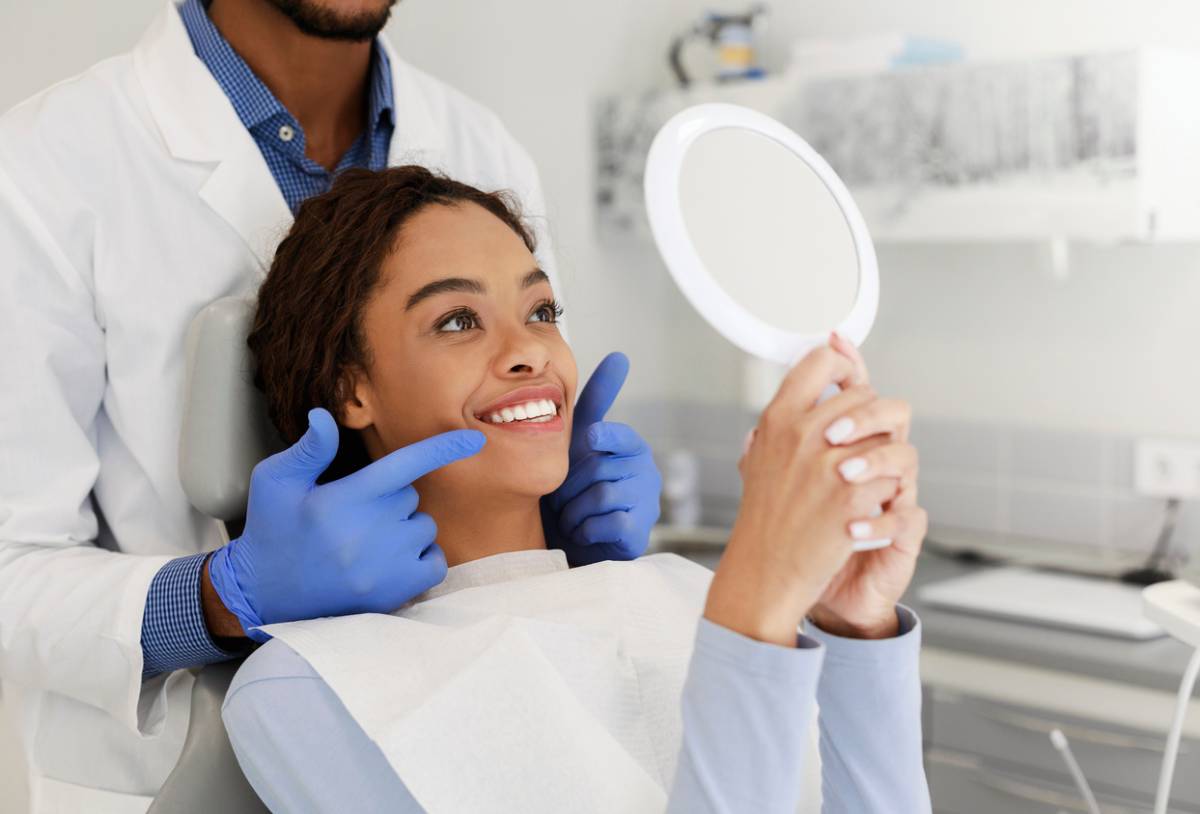Tips to Improve Your Veneers Color
Getting porcelain veneers is a great way to enhance the appearance of your smile. Veneers make the teeth look whiter and straighter and also can change their size and shape. Porcelain veneers are also resistant to damage and can last quite some time. However, veneers are not invincible and can lose their original color over time, especially if not taken proper care of. Your dentist will be able to accurately determine why your veneers changed color and suggest the best course of action. In this article, we will give you tips on how to improve your veneers color.
Do Veneers Stain?
Porcelain veneers are more stain-resistant than natural teeth. Porcelain is less porous than natural enamel, which means it is less absorbent. However, you should still adhere to the recommended diet and lifestyle restrictions to preserve the original color of your veneers for as long as possible. Over time, some discoloration and staining might appear, spoiling the appearance of your veneers.
Another material used for dental veneers is resin composite. This material is much less stain-resistant than porcelain, and you need to take extra care to preserve its appearance.
Why Have My Veneers Changed Color?
Dental veneers can change color with time for several reasons, including:
- Consumption of staining foods and beverages, such as red wine, black coffee and tea, berries, drinks, and candies containing dye, etc. It is best to avoid these types of products as much as possible and brush your teeth immediately after the meal containing them.
- Tobacco consumption.
- You have had your veneers for a long time. Two factors can cause staining in this situation. Firstly, your veneers can be stained and due to replacement just because they are old. Porcelain veneers tend to last for about 15 years and composite veneers—for about 7 years. Secondly, as you age, your gum can start receding, exposing the top part of the veneer. This results in darker spots being visible along the gumline.
- The adhesive seal that attaches veneers to your teeth is broken. When this happens, food and beverage residue can accumulate between the tooth and the veneer, making the latter appear stained or discolored.
- Micro abrasions on your veneers. If you use abrasive toothpaste or toothbrushes, it can result in micro scratches on the surface of your veneers. The damaged area absorbs pigment and bacteria, which provides for staining.
- The tooth underneath the veneer became discolored or decayed. Modern veneers are made to be partially translucent to resemble natural teeth by letting some light through. This means that if there are issues with the tooth itself, your veneer can appear discolored or stained.
- The glazing of your veneer is wearing down. In most cases, this can happen if your veneers are too old or if they are damaged. Glazing protects the harder and more absorbent parts of the veneer. When they become exposed, the veneer can become more prone to staining.
Tips to Improve Your Veneers Color
- The first and main tip is not to use any at-home whitening solutions on your dental veneers. Unfortunately, such whitening kits are made of natural enamel and are not compatible with porcelain or resin composite. In fact, using whitening solutions at home can make your veneers look worse.
- Toothpaste with bleach and baking soda also can damage your veneers, so avoid using them.
- Make an appointment with your dentist for a professional dental veneer cleaning. Your dentist might be able to remove stains and discoloration and refinish the porcelain glaze. This is the most effective cleaning method for your dental veneers, and it can make them look significantly better. However, in cases when the staining is too severe, your dentist might offer to replace your veneers altogether.
How to Take Care of Your Veneers Properly
Proper and regular care can ensure that your veneers stay white for years to come:
- Thoroughly brush your teeth twice a day and floss every night. It is crucial to remove food residue and bacteria to prevent them from accumulating on and between your teeth. On top of that, maintaining proper oral hygiene will help to avoid tooth decay underneath your veneers.
- Use a soft toothbrush and a non-abrasive toothpaste to avoid micro scratches on the surface of your veneers.
- Use a non-alcoholic mouthwash.
- Use a special dental veneer cleaner. Ask your dentist to recommend one that will be the most suitable for your veneers.
- Visit your dentist regularly for oral health checkups and professional cleanings to prevent plaque and tartar accumulation and other oral health issues.
Make an Appointment Today
If you are concerned that your veneers do not look as good as they used to, make an appointment at Smiles of Arcadia with a porcelain veneers expert. We can professionally clean your dental veneers and improve their appearance. Do not hesitate to call our office today.

Leave a Reply